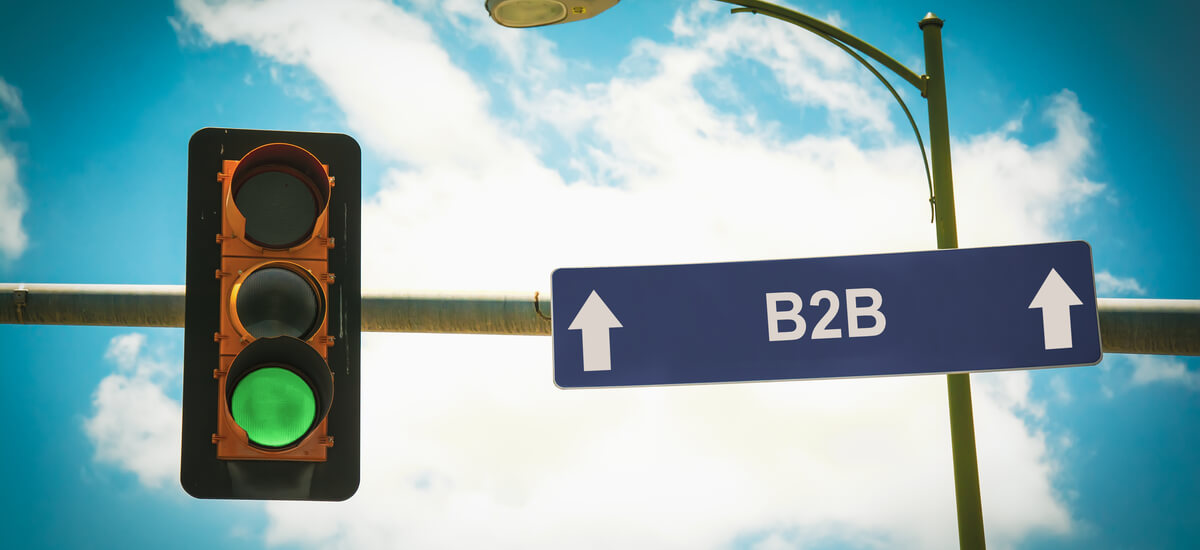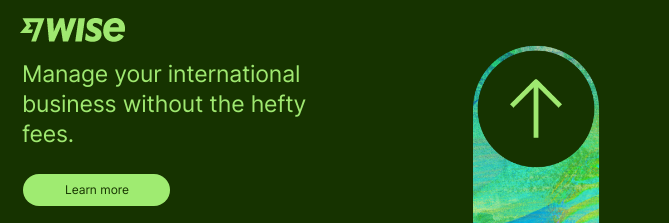Cross-border payments include personal remittances, international corporate payments and cross-border e-commerce. So whether you’re a freelancer being paid by clients abroad, a business owner settling invoices from overseas suppliers, or someone who loves to shop international brands online, you’re involved in cross-border payments.
As the world gets more connected, the importance of cross-border payments is growing. In fact, the value of retail cross-border payments alone is predicted to rise from USD1.95 trillion in 2016, to USD3.56 trillion in 2022¹. It’s no surprise then, that many companies are working to improve access to cross-border payment facilities, and drive down consumer costs.
This guide will walk through some of the currently available cross-border payment options, with a focus on e-commerce payments in particular. We’ll also take a quick look at how the Wise account and Wise for Business are helping millions of customers around the world send cross-border payments for less.
What are cross-border payments?
Cross-border payments occur any time a payment is initiated in one country, and received to an account in another. Payments can be made and received by individuals, businesses and financial institutions like banks. Here are a few examples of common cross-border payments:
- International remittances
- Payroll for employees in distributed teams
- Settling overseas supplier invoices
- Business to business payments
- Online and in-app purchases from international retailers
- Foreign exchange trading or international investments
- Paying for personal and business travel using your home account or card
Cross-border payment challenges
Cross-border payments are a huge business. But they still pose challenges for individuals and organisations who need to rely on them.
One major issue is the cost of making a cross border payment. Traditional banks and service providers often have high administration costs, which are passed onto their customers. That’s especially true when payments are processed using the SWIFT system. SWIFT relies on several banks working in partnership, passing an international payment through a chain of institutions before it reaches its final destination. This can be slow - and costly, as each bank involved (known as correspondent banks)
SWIFT payments can take 2-5 days to process, causing cash flow issues for businesses and individuals alike. Faster SWIFT transfers are being developed - but they’re not here yet. Instead customers can look at newer fintech companies which use a different model to move money faster and more cheaply around the world.
Wise is one such challenger company, helping over 8 million people so far to move their money for less. Wise doesn’t rely on the SWIFT system, but uses a smart new approach which keeps costs down. But the benefits don’t end there. Wise also uses the mid-market exchange rate for all currency conversion. This matters because banks and currency services often add a markup to the mid-market rate, which is a hidden fee. This isn’t transparent and pushes up the overall costs of cross-border payments.
Check out Wise for mid-market currency services with simple, low fees. With all transactions set up online or via your mobile device you can move your money faster, and for less.
See if you can save with Wise
Receiving cross-border payments
If you’re an e-commerce entrepreneur, you’ll want to find smart ways to accept payments from customers based overseas. Here are a few pointers to consider when choosing the right cross-border payment options for your business.
Choosing popular regional payment methods
Different payment methods are common in different countries. If you’re planning on expanding your e-commerce business into new markets, you’ll want to learn a bit about customer preferences in your target market. For example, Visa and Mastercard may be the most commonly used payment cards in Western Europe, but customers in the US might have a preference for American Express or Discover. On the other hand, customers in some regions may not want to pay by card at all, preferring digital wallets or bank transfers.
If you’re choosing a payment gateway for your e-commerce site, make sure it can handle the payment methods preferred in your chosen markets. Offering the right payment options is a big part of localising your e-commerce site, and can make your customers feel more at ease when shopping.
Take payments on your website with the Wise payment gateway
Coming soon - be first to know.
Sign up
Knowing your target market
One good way to make sure you’re setting up your business for a successful expansion is to work with a local partner in the markets you’re targeting. This can help with localising the payment options, and understanding any customer preferences in the region. It’s also a smart way to make sure you’re on top of any financial controls, fees or regulations you need to know about when working in a new country.
Regional language preferences
When you're finalising your choice of payment gateway, you’ll also want to make sure the customer facing information, including terms and conditions, is available in the right languages. All information should be at a native-speaker level, as a mark of credibility and to help customers understand how to make payments.

Cross-border payment types
As the retail financial service industry becomes more and more global, customers are increasingly familiar with multiple payment methods, which can be used for transactions at home and abroad. Offering a good range of options to suit your customers makes sense - and can give your e-commerce profits a boost. Here are the key cross-border payment types to think about.
Debit and credit card payments
Debit and credit card payments, including pre-paid cards, are an easy choice for many customers. They are familiar and a customer needs only to enter the number and details on their card - and possibly pass an additional verification stage. They can then forget about the payment entirely.
However, as card payments require processing, there are often fees to pay somewhere along the line - especially when it comes to cross-border payments. While the exchange rates used by major card issuers are usually fair, there are foreign transaction fees to pay on many card types, which can push up the costs for the consumer, and may come as a surprise.
eWallets and other specialist accounts
Customers can also choose to use a digital wallet, or alternative payment method. Digital wallet takeup is very high in some regions - and while some services like PayPal are popular globally, many other regional wallets exist, which may be preferred by your customers in other countries.
Digital wallets tend to allow customers to pay very easily for goods and services, and often also offer perks and loyalty schemes which can encourage use. They may also allow customers to hold and spend money in multiple currencies. However, there are likely to be fees for the customer to exchange their money from one currency to another, or to withdraw to their own local bank account. These fees may be shown as upfront admin charges, or wrapped up in a poor exchange rate.
Not all specialist online accounts charge excessive or hidden fees, even when working across multiple currencies. The Wise account is a great option for customers who need to hold, send and spend foreign currencies, with currency exchange at the Google exchange rate every time.
Bank transfers
A final common way to settle cross-border consumer payments: bank transfers. Bank transfers are again familiar to customers, and can usually be arranged using online banking in just a few minutes. However, the information required to make a bank transfer can be more complex than making a card payment, which can put customers off.
Bank transfers are more popular in some regions, especially where fast payment services are available. For example, in Australia and New Zealand, POLi payments are real time services which are made simple for consumers using pre-populated payment forms, cutting the time, hassle and cost for consumers.²

B2B Cross-border payments
Business to business payments make up a huge volume of the amount of money moved
around the world. A recent report shows an amazing USD127 billion in annual B2B payments³, which can only grow as businesses become more connected around the globe.
International payments as a business
Business owners know the importance of getting a high quality service for a competitive price. When it comes to sending and receiving international B2B payments, there are lots of options and payment routes available - but as it is a developing market, it pays to look at emerging technology and new companies, to drive down the costs of sending cross-border payments.
Here are some common - and some more innovative - ways of sending cross-border B2B payments.
SWIFT payments
Businesses can make cross-border payments through the SWIFT system, just like consumers can. In fact, most regular payments placed with your online banking system or a traditional payment provider will probably be sent using SWIFT, even if you don’t know it.
However, B2B SWIFT payments face the same issues as consumer SWIFT payments - which means the speed and costs of SWIFT can be a problem for profits and cash-flow. One additional issue for B2B payments through SWIFT is that the correspondent bank charges can not always be known in advance. This can make it hard if you’re paying an overseas supplier for example, and need to know the exact amount that will be received.
PayPal
PayPal has a range of business services, which include sending and settling invoices, and international transfers. However, PayPal also has relatively high and complex fees, with hefty charges for currency conversion. Although a familiar and simple user experience, you’ll want to read the PayPal terms, conditions and fees carefully before choosing this as your preferred method of making cross-border B2B payments.
Alternative Payment Methods
Because traditional methods of making cross-border payments are typically fairly slow and expensive, there are a broad range of new options emerging to better meet business needs.
One great place to start is Wise for business. With an online Wise for Business account, with a one-time fee of S$ 99 you can hold dozens of different global currencies, and switch between them using the mid-market exchange rate with no markup. You’ll be able to receive payments like a local in a range of currencies, using your own bank details for countries like the UK, US, Australia, New Zealand and the euro area - and send money in 40+ currencies, up to 19x cheaper than with PayPal.

Regulations for cross-border payments
Cross-border payments are subject to rules and regulations, depending on the country they originate in, where they’re headed, and any other jurisdictions they pass through on the way.
This should come as no surprise - after all, just as financial transactions within Singapore are overseen by MAS, each country has their own system and regulatory authorities to protect consumers and avoid fraud and illegal activities. The fine detail of the regulations should be taken care of by your payment provider, but it does pay to understand some of the rules which may impact your personal or business payments overseas.
For example, payments within the EU use the SEPA system⁴, which is designed to make cross-border payments made in euros the same as sending money domestically. This means that SEPA payments are typically quick and cheap compared with other international transfers.
Other legislation such as PSD2⁵ (the second Payment Services Directive), is also in force in Europe, with legislation appearing all the time to make sure international payments are fairly regulated and kept secure. PSD2 means that customers can make online e-commerce payments more easily, and also improves the security measures in place for online shopping, by requiring strong customer authentication (SCA), using methods like 3D Secure 2.0 (3DS2).
All in all, this makes for a better experience for customers, and boosts confidence in digital cross-border payments, a win win for customers and merchants alike.
Cross-border payments are a part of everyday life for many of us - and are becoming more commonplace as the world gets increasingly connected. Despite this, traditional banks and financial institutions have not always kept up with consumer demand for simple, low cost cross-border payment services. Newer services have emerged to provide smart modern alternatives, helping customers cut costs and businesses to grow.
If you make or receive international and cross-border payments personally, you could benefit from a Wise Personal Account. And if you’re a business owner working across borders, you’ll love Wise for Business as a simple way to increase your reach and cut your costs.
Wise uses the mid-market exchange rate for currency conversion, no matter whether you’re sending a small payment to a relative back home, or settling a large supplier invoice for your business. Payments are secure, fully regulated, and fast - with cheaper fees, and a better exchange rate that you’ll usually find elsewhere. See if you can save with Wise today.
Sources:
- Statista Value of cross-border payments revenues worldwide from 2016 to 2022, by type
- POLi payments
- Statista - Value of cross-border payments revenues worldwide in 2018, by type
- European Commision - Single euro payments area (SEPA)
- European Commision - Payment services (PSD 2) - Directive (EU) 2015/236
All sources checked 30 October 2020
*Please see terms of use and product availability for your region or visit Wise fees and pricing for the most up to date pricing and fee information.
This publication is provided for general information purposes and does not constitute legal, tax or other professional advice from Wise Payments Limited or its subsidiaries and its affiliates, and it is not intended as a substitute for obtaining advice from a financial advisor or any other professional.
We make no representations, warranties or guarantees, whether expressed or implied, that the content in the publication is accurate, complete or up to date.











